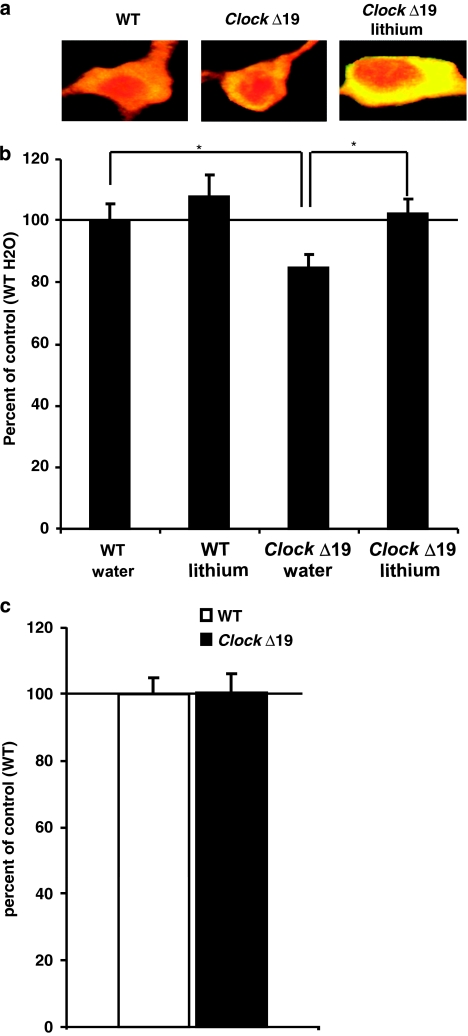Figure 2.
ClockΔ19 mutant mice have smaller dopamine cell soma size, which is restored with lithium treatment (a) Representative dopamine neurons stained with histone H3 (red) and TH antibodies (yellow: red+green). (b) The soma of dopamine neurons of ClockΔ19 mutant mice are significantly smaller than the cell somas of the same neuron type in wild-type littermates (*P<0.05 by analysis of variance (ANOVA), n=5–8 mice per group, 7–10 cells per animal). Under lithium treatment, the size of the somas of cells from Clock mutant mice significantly goes back to untreated wild-type level (*P<0.05 by ANOVA, n=5 mice per group, 7–10 cells per animal). There is no significant difference between wild-type mice treated with water or lithium. (b) Non-dopaminergic neurons of the subiculum of the hippocampus have the same volume in ClockΔ19 mutant mice compared with wild-type littermates (n=5 mice per group, 10 cells per animal).

